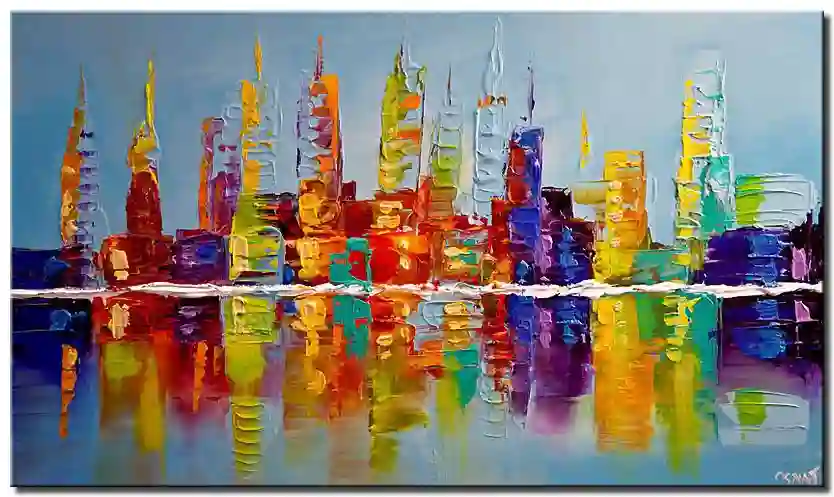Landscapes have long been a favorite subject for artists, and oil painting offers a versatile and vibrant medium to capture the beauty of nature. Whether you’re an experienced painter or a beginner, the art of depicting landscapes in oil can be a fulfilling and rewarding journey. In this article, we’ll explore techniques and tips for bringing nature to life on your canvas and creating stunning landscape oil paintings.
1. Study the Natural World:
Before you start painting landscapes, spend time observing and studying nature. Visit parks, gardens, and natural landscapes to understand the nuances of the environment, including the play of light, the colors of different seasons, and the textures of trees, rocks, and water.
2. Choose Your Subject:
Landscapes offer a vast array of subjects, from serene meadows and rolling hills to rugged mountains and coastal vistas. Decide on the landscape that resonates with you and suits your artistic vision. Your choice of subject will guide your composition and color palette.
3. Plan Your Composition:
Compose your landscape thoughtfully. Consider elements like the horizon line, foreground, middle ground, and background. A well-balanced composition creates depth and guides the viewer’s eye through the painting. Use sketches or thumbnail studies to plan your composition before starting the final artwork.
4. Understand the Play of Light:
Light is a vital element in landscape painting. Pay close attention to how light interacts with the landscape, casting shadows, and creating highlights. Consider the time of day and weather conditions, as they significantly influence the mood and atmosphere of your painting.
5. Select Your Color Palette:
Choose a color palette that reflects the natural colors of your chosen landscape. Earthy tones, greens, blues, and warm sunset hues are common in landscape paintings. Experiment with color mixing to achieve the right shades and values for your composition.
6. Work from General to Specific:
When painting landscapes, start with broad, general shapes and gradually work towards finer details. This approach allows you to establish the overall structure and values before diving into intricate elements. Use larger brushes for initial layers and reserve smaller brushes for details.
7. Capture Texture and Texture:
Landscape painting offers opportunities to experiment with texture and brushwork. Use various brushstrokes to depict the texture of different elements, such as soft, flowing strokes for water and bold, impasto strokes for textured surfaces like rocks or tree bark.
8. Create Atmospheric Perspective:
To convey depth and distance in your landscape, employ atmospheric perspective. Objects that are farther away should appear lighter, less saturated, and less distinct. This technique mimics the natural effect of haze or moisture in the air.
9. Experiment with Different Techniques:
Don’t be afraid to experiment with different oil painting techniques. Try glazing for subtle color shifts, scumbling for softening edges, and impasto for adding dimension. Each technique can enhance the visual impact of your landscape.
10. Embrace the Seasons:
Landscape paintings can be transformed by the changing seasons. Consider painting the same landscape in different seasons to explore how variations in light, color, and mood can evoke different emotions and visual experiences.
11. Add Personal Expression:
While capturing the essence of nature is important, don’t forget to infuse your personal style and emotion into your landscape paintings. Your interpretation and connection with the landscape are what make your artwork unique and captivating.
12. Practice and Patience:
Landscape painting, like any art form, requires practice and patience. Don’t be discouraged by initial challenges. Each landscape you paint is an opportunity for growth and improvement. Keep experimenting, learning, and refining your skills.
Conclusion:
Landscapes in oil painting offer a beautiful way to connect with the natural world and express your artistic vision. By studying nature, planning your composition, understanding light, and experimenting with techniques, you can create stunning landscape artworks that transport viewers to serene meadows, majestic mountains, or tranquil shorelines. Remember that landscape painting is not just about replicating what you see; it’s about capturing the spirit and emotion of the landscape, bringing it to life on your canvas.
So, set up your easel, choose your favorite landscape, and let your oil paints become the bridge between the beauty of nature and the canvas of your imagination.








